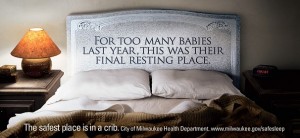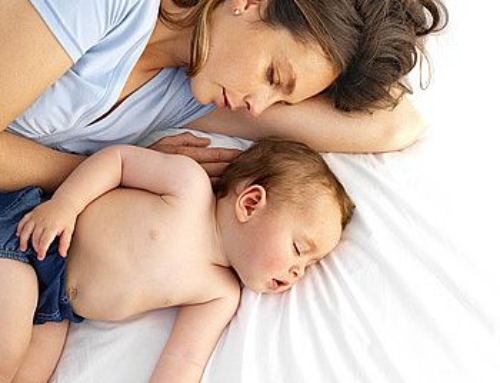By Tracy G. Cassels
 Many Australians woke this morning to scare mongering about bedsharing thanks to articles in their papers. Claims that 25 babies died in the parental bed last year have led people to declare that bedsharing should be illegal. Some people are being investigated for it as it is not seemingly okay to report it to Child Services (I kid you not). It’s hard to tackle these articles because they rarely discuss full statistics, their aim is to fear-monger, and they are not based on any type of logic any intelligent person would follow. But there they are. Telling families that if they bedshare, they might as well suffocate their own child.
Many Australians woke this morning to scare mongering about bedsharing thanks to articles in their papers. Claims that 25 babies died in the parental bed last year have led people to declare that bedsharing should be illegal. Some people are being investigated for it as it is not seemingly okay to report it to Child Services (I kid you not). It’s hard to tackle these articles because they rarely discuss full statistics, their aim is to fear-monger, and they are not based on any type of logic any intelligent person would follow. But there they are. Telling families that if they bedshare, they might as well suffocate their own child.
So… let’s break it down and see what we can really find…
We have a total of 25 babies who died in the parental bed. We have no data on HOW they died. We have no data on whether or not bedsharing was done SAFELY. These are questions that MUST be asked. I have written about the safety issue with respect to SIDS and suffocation (sadly suffocation is often included in SIDS numbers nationally which makes it incredibly difficult to disentangle the two), and from all we know, the issue really comes down to safety. Even that awful piece by Carpenter and colleagues earlier this year was so horribly done, it’s brought researchers around the world out to discredit the analyses. Based on a comprehensive analysis of all infant deaths in Alaska, it was found that 99% of bedsharing deaths included AT LEAST 1 risk factor (Blabey & Gessner, 2009). (These include smoking, alcohol, drug (illegal and legal) use, sleeping next to someone other than mom, soft mattresses, too many pillows, etc.) At least give us that information before condemning bedsharing; after all, those of us who support bedsharing do not support unsafe bedsharing. However, how can families know what’s safe or not when no one will talk about it?
Getting back to the particular case at hand, based on recent SIDS rates and birth rates in Australia, there would have been approximately 95 SIDS deaths in Australia this past year. (Note that I am extrapolating so this number may be off because I could not find the exact number.) If all 25 bedsharing babies were included in this (not unreasonable as they often are lumped together even when suffocation is known), that means that 28% of infant deaths occurred while bedsharing. Now, if we assume that all bedsharing deaths were not linked with any other known risk factor (highly unlikely given previous research), we have to ask: Is 28% the usual rate of bedsharing at any given night for babies most at risk of SIDS (i.e., those under six months of age)? And to be totally fair, often cot deaths are sometimes considered SIDS even if it is most likely the baby suffocated on a bumper or pillow or stuffed animal, so making this assumption about safe bedsharing is not so out of reach. (That said, it’s completely inappropriate from a policy point of view, but it seems appropriateness and policy are already antithetical to each other at this point in the discussion.)
It’s hard to find the rates of bedsharing. Personally, we know many families that if asked, “Do you bedshare?” would answer “No!” except their child climbs into bed with them every single night. Their child just doesn’t start off in his/her own bed. This means that most estimates are considered underestimates the rates of bedsharing. However, despite this, one Australian study (Rigda, McMillen, & Buckley, 2000) found that 80% of babies bedshare at least partially in the first six months (reminder that this is the highest risk for SIDS). Although not all 80% are bedsharing every night, we can probably assume that more than 28% of them are bedsharing on any given night, meaning that putting your baby to bed in a cot is ostensibly riskier than taking them to bed with you.
And that doesn’t even take into account the safety issue we’ve already spoken about.
So… what can we say? Well, as usual, the stance on this page is that bedsharing can be safe and wonderful if it works for a family. It doesn’t always work (see here) and that’s okay, but the real problem is when families aren’t given information about safe bedsharing and then end up putting their babies in even greater danger (Blair, 2010). Trying to criminalize something that has been part of our evolutionary history and facilitates breastfeeding is NOT the way to go.
Australia: You’re fighting the wrong battle here. Help parents understand how to bedshare safely and offer alternatives that help families who cannot bedshare safely. At the end of the day, that will be what keeps babies alive.
Blabey MH, Gessner BD. Infant bed-sharing practices and associated risk factors among births and infant deaths in Alaska. Public Health Reports 2009; 124: 527 -534.
Blair PS. Perspectives on bed-sharing. Current Pediatrics Reviews (2010); 6:67-70.
Rigda RS, McMillen IC, Buckley P. Bed sharing patterns in a cohort of Australian infants during the first six months after birth, J. Paediatr Child Health 2000; 36: 117-121.






I read that article after it was linked in the comments of the Facebook post. It angered and disgusted me so much that this is now DOCS worthy.
Surely, they have enough to do with looking out for children that actually are being abused.
Yet another opportunity for acknowledging that parents are going to bedshare on occasion and educating them on how to do it safely has been lost.
On a positive note I was impressed when I had my baby in June that I received brochures on both safe cot sleeping and safe bed-sharing in my hospital bag. I have also seen the safe bed-sharing brochure at the KidSafe shop.
Ever since I first saw the scare tactic posters of a baby lying in an adult bed next to a meat cleaver in my local hospital L&D floor, I have wonders who is paying for this massive campaign. I’m surprised to see a similar campaign going on in other countries as well. I really was at a loss as to who has anything to gain (and therefore willing to spend big buck on the campaign) by people not bedsharing. Then I read your and other articles on the strong association between bed sharing and successful breastfeeding and it hit me! I wonder how much money for this campaign comes from the manufacturers of baby formula? It would be interesting to find out but probably impossible. just a thought..
Well I discovered it isn’t as covert as the formula manufacturers contributing to this ridiculous campaign…its the crib manufacturers. Nice and blatant connection there! (Juvenile Products Manufacturers Association or JPMA).
Which Australian papers did it appear in?
People sent it to me via email/internet so I guess online sources. I would have to go back and check them. Were none of them linked in the article? I meant to 🙁
I found it in the Sunday Telegraph. http://www.dailytelegraph.com.au/news/nsw/experts-issue-warning-to-parents-about-the-fatal-risks-of-allowing-children-to-sleep-in-their-bed/story-fni0cx12-1226791064055
I would still be very interested in knowing if the same or a similar article appeared in any other Australian paper…
Also, I got the impression that that horrifying tombstone image appeared in the Australian papers, but thankfully the Sunday Telegraph only seemed to show an attractive photo of an Australian mother and daughter who sleep together, not some image clearly designed to scare people. So far with my searching, I have only seen the awful anti-bedsharing images in articles discussing the Sunday Telegraph article. Kidspot included the disturbing ‘baby sleeping next to a knife’ image in their article about the Sunday Telegraph article http://parenting.kidspot.com.au/time-another-round-co-sleeping-kills-babies/#.UsyUZ_vT68e , and the above Evolutionary Parenting one has the tombstone image. But could someone please tell me if the Australian public have been exposed to either the tombstone or the baby and knife image directly, via an Australian paper?
I saw they’d used the tombstone picture on one of the FB pages with an article – don’t think it was the daily telegraph though. Why I used it as well!
I had child services called on my for bedsharing, I wasn’t even out of hospital 24hrs before they showed up at my door
That’s horrible! I’m so sorry 🙁